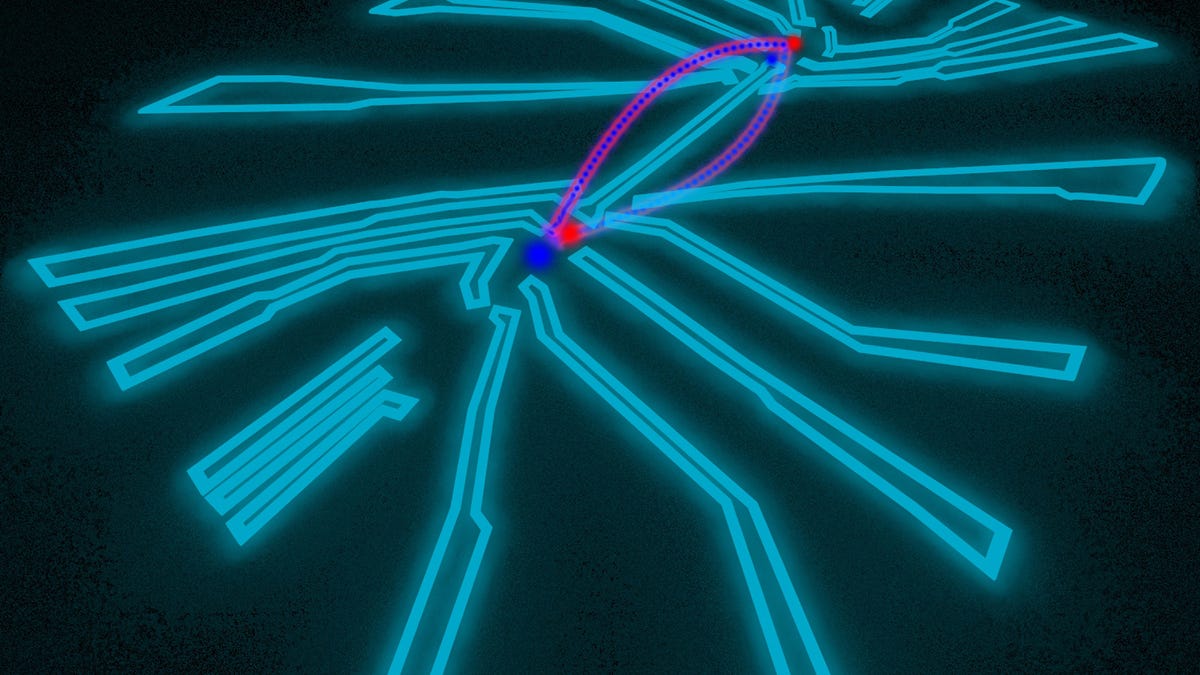Physicists connect the dots on quantum computing
Researchers at Harvard and Max Planck Institute of Quantum Optics make progress on scalable designs for potentially super powerful computers that harness the weird laws of quantum mechanics.

Physicists have long sought to use the bizarre workings of quantum mechanics to make mind-boggling leaps in computing power. And they appear to actually be making progress.
Researchers from Harvard University and the Weizmann Institude of Science in Israel today published a paper describing a technique for two quantum bits, or qubits, to operate in a predictable and coordinated way, a small step toward a working quantum computer.
In a separate effort, researchers at the Max Planck Institute of Quantum Optics today claimed to have made a breakthrough by making a prototype of a quantum communications network. Both groups say their experiments were designed with eventually building commercial systems in mind.
Efforts like these are still fundamental research so it's impossible to say when a quantum computer for super powerful cryptography, for example, will be functioning. But the work in quantum computing, which is based on discoveries in physics from the 1920s, offers one possible route to ensure a trajectory of ever-more-powerful computers in the future.
Harnessing the laws of quantum mechanics, which deals with the behavior of atoms, photons, electrons, and other particles, would mean incredibly powerful computers faster than today's supercomputers. It's particularly important for encryption and secure communications, but it could be used to enable new types of simulations or, in the shorter term, sophisticated measurement devices, such as magnetic resonance imaging.
In a paper published in Science today, researchers at Harvard and Weizmann demonstrated two quantum bits "entangled" in a predictable way. The paper is significant because the group demonstrated one of the theories predicted by quantum physics in a working system, said Amir Jacoby from Harvard. The system was also built using a commonly used semiconductor material, which means the technique could benefit from the industry's scale and techniques around miniaturization, he added.
The basis for today's processors is the transistor, tiny gates where turning electrical current on and off represents two states--the ones and zeros of digital computing.
In the quantum device made at Harvard, different states are represented with the spin of electrons--either clockwise or counterclockwise. And this is where the nonintuitive workings of quantum physics come in.
Joined at the hip
In the 1920s, physicists theorized that some particles are so small that one can't measure them without changing them. For this theory to work, the particles have to be in a "superposition" of every possible state before they are measured. So instead of just representing ones and zeros, quantum systems can be both at once.
Researchers have been able to represent the different states of individual quantum bits. Now the Harvard-led group has been able to demonstrate quantum entanglement, where two particles share correlated properties in a predictable way, another crucial building block to a general quantum computer.
"You need some correlation, some property between two of these quantum bits to control and to generate a universal quantum machine," Yacoby said. "This has extreme power."
In its experiments, the group was able to control the spin of four electrons in gallium arsenide by manipulating their electrical fields. Its measurements showed that the bits had the same entangled state.
The next step for this type of research is to build multiple quantum bits to perform simple computations and to develop an error correction system, Yacoby said. A single qubit can represent information, but there needs to be different transistor-type devices to perform calculations, he said.
Quantum Internet
Scientists at the Max Planck Institute of Quantum Optics in Germany, meanwhile, have applied the concept of quantum mechanics to communications.
They claimed the first elemental quantum network where information was stored in the quantum state of a single atom using an approach which could be done at larger scale. The atom emits a photon, which encodes the atom's state in its polarity. The photons were then transferred to another network node at another laboratory connected by an optical fiber to send information.
"We were able to prove that the quantum states can be transferred much better than possible with any classical network," Stephan Ritter of the lab said in a statement.
The group was also able to demonstrate entanglement, or a correlated state, between two physically separated network nodes. "It could also serve as a resource for the teleportation of quantum information," Ritter said. "One day, this might not only make it possible to communicate quantum information over very large distances, but might enable an entire quantum internet."

